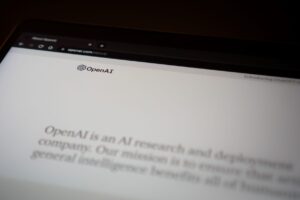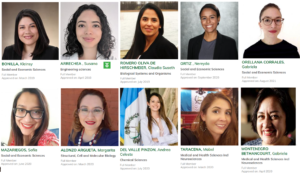Slogans, social media and competition drive students into libraries for innovative winners of 2014 E-Resource Promotion grants
Since 2011, INASP has offered several small grants of up to $500 to libraries and consortia to assist them in promoting their online journals and books – or e-resources. In the 2014 cycle, librarians and library staff at universities in INASP partner countries came up with creative and imaginative ways to reach out to students, reaching over 7600 people through their activities.
Some applicant institutions were finding that, while they had a high-quality and wide-ranging collection of e-resources, many students simply weren’t using them. At the Mwenge University College of Education (MWUCE) in Tanzania, a survey found that 38% of students had no awareness of e-resources. In most cases this was because they were not equipped with the skills or knowledge to be comfortable in accessing the resources. At Kenya’s United States International University (USUI) Library staff suspected that students found the library environment a ‘mystifying’ place, with e-resources the most under-utilized library resource.
USUI’s Liaison Librarian and the library team realized that although their students embrace new and ever-evolving technology in other areas of their lives; phones, social media, they didn’t consider the library, or its resources, within the same bracket. They continued to refer to Google rather than the library resources; as the librarians at Zimbabwe’s Bindura University of Science Education Library put it, students are too reliant on ‘Dr Google’.
We have highlighted below two winners of the 2014 competition who, while coming up with different activities, used similar strategies to ensure they were connecting with their users.
Both USIU and MWUCE recognized the need to appeal to users in their own language, using social media and fun activities. They used these activities to draw users into the library where they were holding events and social interactions. They worked to build relationships, to get to know faculty members and students and to alter perceptions of librarians as “dull, strict, always enforcing library rules”. Once they had users in the library, they made sure they used their time well, to learn to access e-resources and build skills. At both universities, staff recognized the need for activities to be ongoing, and aimed to build sustainability into their projects.
United States International University, Kenya
To connect with their users, the USUI library team hosted a ‘Library and Information Week’ of activities designed to “demystify” the library, which drew upon social media trends and memes to “change perceptions” of the library, get more users in and start to build closer relationships between librarians and their users: students, faculty and staff. These included an online ‘#shelfie selfie’ competition where users took photographs of themselves in the library, posting them on social media with the best one winning a prize. They arranged camel rides to highlight the disparity in resource accessibility between USUI and North-Eastern Kenya, where people’s only access to books is from ‘camel libraries’, which caused much “excitement”. Trivia quizzes and competitions were focused on use of e-resources. In the library, staff wore newly branded t-shirts; ‘Join the dots – your eLibrary made simple’, for the event ‘Tea with your Librarian.’ Staff considered this a highly valuable activity, allowing them to connect with users and make them comfortable using, not only the e-resources, but the library itself. Lecturers were invited to bring their classes along for hands-on training sessions with librarians as well as tours of the library.
USIU reached 2000 people through their activities and have reported growing numbers of lecturers requesting training for their students in use of e-resources as well as making one-on-one appointments for themselves. Students are also more often asking for help and guidance in their usage. USIU plan to hold a Library Week once a year, and would like to hold an e-resources week once a semester, to talk about and promote their usage. They hope to make “the eLibrary the first stop for the user community.”
Mwenge University College of Education,Tanzania
At MWUCE, staff designed two competitions – one for students, one for teaching staff – to create incentives for staff and students to learn how to use e-resources in their academic work. These competitions were combined with the set-up of the ‘E-Resource Support Hub’, where entrants, as well as all other students, could go to find a dedicated member of staff to guide them on using the e-resources for the competition. Aimed at students was the ‘E-Resource Essay Competition’ and aimed at lecturers was the ‘E-Resource Teaching Competition’. Library staff started to see increased interest in the use of e-resources straight away, with lecturers requesting sessions for their classes and competition hopefuls attending the Support Hub in the Library. Winner’s presentations and receptions were held in the library attracting people to talk to librarians and find out more about e-resources and what support is available. Teaching staff were particularly interested to learn about how e-resources can be used to enhance and supplement traditional pedagogical methods.
MWUCE staff also used these opportunities of interaction with their users to do questionnaires and surveys which they will feed into a new Information Literacy course they are developing. They consider this program as particularly important because “the majority of our students are enrolled in the Bachelor of Education and are the future educators of our country.” The activities reached over 2500 people directly and indirectly.
The winners of the competitions have decided to research the use of e-resources in higher education as a result of taking part in the activities. MWUCE library staff used what they learned during their time in the Support Hub to come up with new strategies to promote their resources along with assess what the most pressing institutional needs are. They plan to continue running the Support Hub in the library. These activities benefited the institution as a whole, with students and teachers learning from library staff, and library staff learning from their user community so as to provide more effective materials and activities in the future.
We are now inviting entries to the 2015 Electronic Resource Marketing competition. Information about how to enter can be found on the INASP website and the competition is open until the 12th July.
The aim of the 2015 competition is to encourage consortia and individual libraries to think beyond simply promoting their electronic resources (e.g. the mere production of posters, leaflets and online information). Therefore, the competition offers small grants to help consortia and individual libraries market their electronic resources.
We have put together a guide to the 7 key concepts of marketing libraries, with tips, suggestions and guidance in developing a marketing plan.





In a rapidly changing environment like the one we are experiencing today, you cannot rely on age old traditions as found in library manuals on how to engage with your library users. You need to go where they are even if its on social media as evidenced by the efforts of the listed libraries. We need to keep evolving with the times.